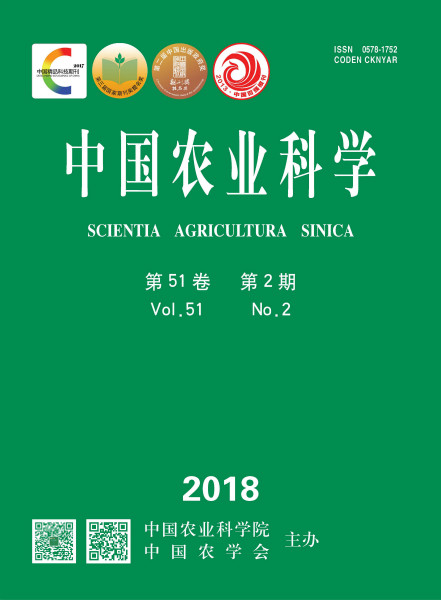-
Differential Expression of Grain Pigment Related Genes of Guizimai No.1
- XU Xi, REN MingJian, LI LuHua, YANG XiCui, XU RuHong
-
Scientia Agricultura Sinica. 2018, 51(2):
203-216.
doi:10.3864/j.issn.0578-1752.2018.02.001
-
 Abstract
(
468 )
Abstract
(
468 )
 HTML
(
10 )
HTML
(
10 )
 PDF (3293KB)
(
832
)
PDF (3293KB)
(
832
)
 Save
Save
-
References |
Related Articles |
Metrics
【Objective】 The objective of this study is to investigate the transcriptome differences after and before purple- changing periods of grain at filling stage of Guizimai No.1, explore the key genes and enzymes that contribute to the biogenesis of anthocyanin, and then enrich the transcriptome data of grain pigment in wheat, provide references for the cloning and expression of the transcription factor. 【Method】 RNA-seq, construction library and quality assessment were carried out for two periods before and after purple-changing of Guizimai No.1 by using the Illumina Hiseq 2000TM sequencing platform, and the sequencing results was analyzed by bioinformatics. TTM was used to standardize the read count data, then DEGseq was used to analyze the difference, and the q-value<0.005 and | log2 (fold change) |>1 were set as the threshold. The differential expression genes (DEGs) were obtained through selecting, in accordance with the transcriptome sequencing, then these DEGs were analyzed by BLAST search, NR annotated, GO functional enrichment and KEGG pathway method to find out the key genes and enzymes associated with anthocyanins, and combined qRT-PCR to verify the expression level of the key genes and key enzymes in different periods, finally the information of these key genes was mastered. 【Result】 The RNA-seq results showed that 13.36 G and 12.69 G clean bases were obtained, 106 906 108 and 101 547 534 clean reads accounted for 93.73% and 94.90% of the raw reads after and before purple-changing of Guizimai No.1, respectively. Clean reads were spliced by Trinity, totally 170 396 transcripts were obtained with a length of 119 020 625. There were 119 572 Unigenes after splicing clean reads. In the BLAST search, 86 004 (71.92%) Unigenes out of 119 572 high quality unique sequences had at least one significant match to existing gene models. According to Unigenes’ Nr database alignment, at least 5 Unigenes with similar gene identities and known sequence homologies to Aegilops tauschii, Triticum urartu, Brachypodium distachyon, Hordeum vulgare, Triticum aestivum, and so on were identified. The results of KOG database alignment showed that the annotated genes were classified according to 26 groups in KOG, and the greater percentage of generally functional genes, posttranslational modification and transport, molecular chaperones and translation, ribosomal structure and biosynthesis was 15.79%, 14.51% and 10.54%, respectively. A total of 643 DEGs were found, 236 DEGs were up-regulated and 407 DEGs were down-regulated. GO commentary indicated that there were 44 terms in accordance with biological process, cellular component, molecular function of the next level of classification, the differential genes significantly enriched in the carbohydrate metabolism process (GO: 0005975, 16.03%), stress response (GO: 0006950, 10.83%) and hydrolase activity (GO: 0016787, 34.84%) and other categories. KEGG pathway enrichment analysis showed that the 353 different genes were enriched in 153 related pathways, among them, the pathways of starch and sucrose metabolism, phenylpropanoid biosynthesis and flavonoid biosynthesis were significantly enriched. There were 66 genes related to flavonoid biosynthesis, and two up-regulated Unigenes, involving two key enzyme genes of CHS, ANS. log2 (fold change) were 3.4164 and 2.1258, respectively. The qRT-PCR results showed that the expression of CHS and ANS after purple-changing was significantly up-regulated, which was consistent with the results of RNA-Seq analysis, RNA-seq results were reliable. 【Conclusion】Compared the RNA-seq after and before purple-changing periods of Guizimai No.1 grain, a large number of Unigenes and DEGs were obtained. It is identified that the two key enzyme genes (CHS and ANS) in flavonoid metabolism pathway play a significant role in the regulation of anthocyanin synthesis in Guizimai No 1.









